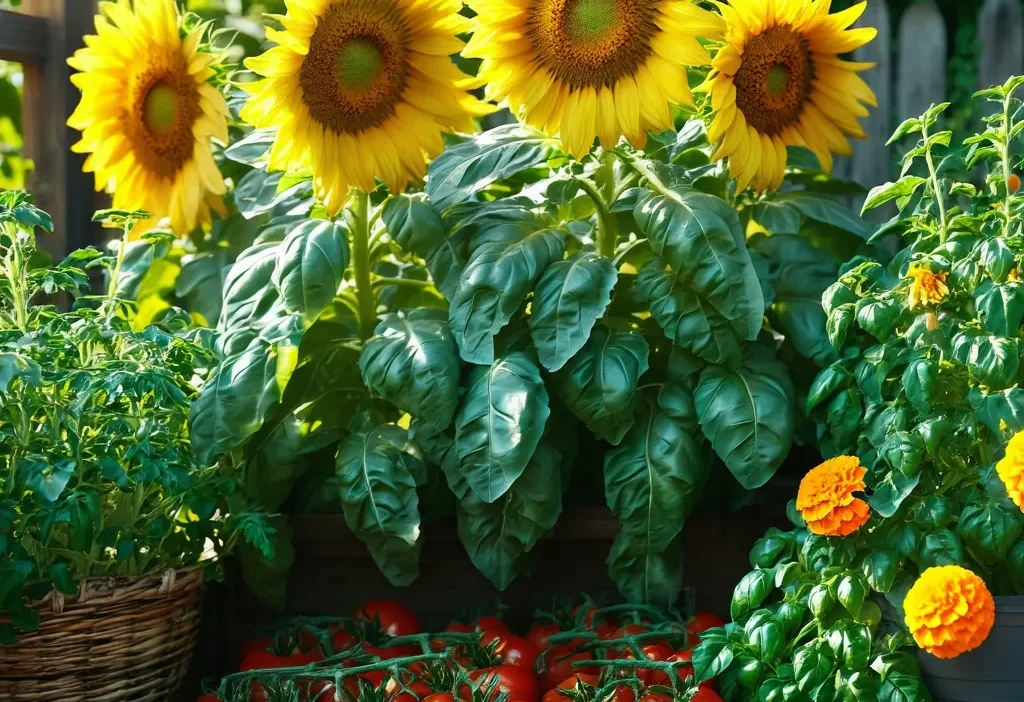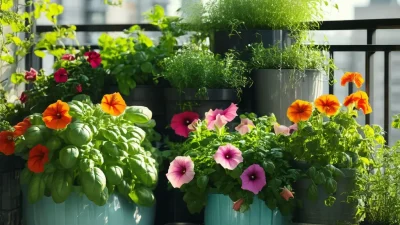The Art of Companion Planting: Boosting Your Garden’s Health Naturally
Gardening is more than just planting seeds and waiting for results. It’s an art form that requires patience, knowledge, and a touch of creativity. One of the most fascinating aspects of gardening is companion planting—a practice that leverages the natural relationships between plants to create a harmonious and productive garden ecosystem.
What is Companion Planting?
Companion planting is the strategic placement of different plant species in close proximity to maximize their mutual benefits. This age-old technique enhances soil fertility, improves pest control, and boosts pollination, leading to healthier plants and higher yields. It’s a cornerstone of organic gardening, promoting sustainability by reducing the need for synthetic pesticides and fertilizers.
Why Should You Care About Companion Planting?
Here are just a few reasons why companion planting deserves your attention:
- Natural Pest Control: Certain plants release chemicals that repel pests or attract beneficial insects, reducing the need for harmful pesticides.
- Improved Soil Health: Plants with different root systems can help break up compacted soil and improve drainage while others fix nitrogen in the soil, enriching it naturally.
- Enhanced Growth and Flavor: Some plant combinations are known to improve the flavor and growth rate of their neighbors through shared nutrients or shade provision.
- Better Pollination: Flowers that attract pollinators can significantly boost fruit production in nearby crops like tomatoes, peppers, and cucumbers.
- Sustainable Practices: By working with nature’s rhythms and relationships, you’re contributing to a healthier environment and reducing your garden’s carbon footprint.
Popular Companion Planting Combinations
Not all plants get along. Some combinations can be detrimental, while others are perfect partners. Here are some tried-and-true pairings:
1. Tomatoes and Basil
Basil is a classic companion for tomatoes. It not only enhances the flavor of your tomatoes but also repels pests like aphids and whiteflies. Plus, its aromatic flowers attract pollinators, ensuring better fruit set.
2. Marigolds and Vegetables
Marigolds are a gardener’s best friend. Their strong scent deters many common garden pests like nematodes and aphids. Plant them alongside vegetables to protect your crops naturally.
3. Sunflowers and Corn
Tall sunflowers provide shade for young corn plants, helping them retain moisture during hot summer days. In return, the sturdy cornstalks support the sunflowers as they grow taller.
4. Cucumbers and Dill
Dill attracts beneficial insects like ladybugs and lacewings that prey on cucumber beetles. It also improves the flavor of nearby cucumbers, making it a win-win combination.
How to Implement Companion Planting in Your Garden
Ready to give companion planting a try? Here are some practical tips:
- Plan Your Layout: Research the specific needs and interactions of the plants you want to grow. Group plants with similar light, water, and soil requirements together.
- Start Small: If you’re new to companion planting, begin with a small section of your garden using well-known combinations like tomatoes and basil or marigolds and vegetables.
- Mix Flowers and Vegetables: Incorporate flowers throughout your vegetable patch to attract pollinators and deter pests naturally.
- Observe and Adjust: Keep an eye on how your plants are responding. If one combination isn’t working, don’t hesitate to experiment with different pairings.
Common Companion Planting Mistakes to Avoid
While companion planting offers many benefits, it’s not without its challenges. Here are some common pitfalls to watch out for:
- Overcrowding: Just because two plants like each other doesn’t mean they should be planted on top of one another. Ensure there’s enough space for roots and foliage to grow.
- Ignoring Plant Growth Cycles: Some plants are fast-growing while others take their time. Be mindful of growth rates to prevent one species from overshadowing or outcompeting another.
- Neglecting Soil Preparation: Companion planting doesn’t mean you can skip soil preparation. Ensure the soil is rich, well-drained, and amended with organic matter as needed.
Expert Tips for Successful Companion Planting
To get the most out of your companion planting efforts, follow these expert recommendations:
- Rotate Crops Annually: To maintain soil health and prevent pest buildup, rotate your plantings each year so that different families of plants grow in the same spot.
- Incorporate Companion Herbs: Herbs like parsley, thyme, and rosemary not only add flavor to your dishes but also serve as excellent companion plants by deterring pests and attracting pollinators.
- Use Succession Planting: For continuous harvests, plant fast-growing crops alongside slower ones so that you can enjoy fresh produce throughout the growing season.
Conclusion: Embrace the Art of Companion Planting
Gardening doesn’t have to be a solitary endeavor. By embracing companion planting, you’re creating a dynamic ecosystem where plants support and enhance each other’s growth. Not only will your garden thrive with greater productivity, but it’ll also become a more beautiful and sustainable space. So roll up your sleeves, get your hands dirty, and start experimenting with these natural partnerships today!
Remember, gardening is a journey of learning and discovery. The more you observe and adapt, the better your garden will become. Happy planting!





